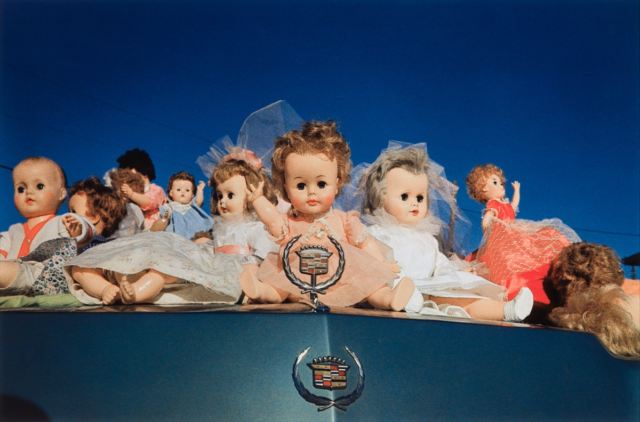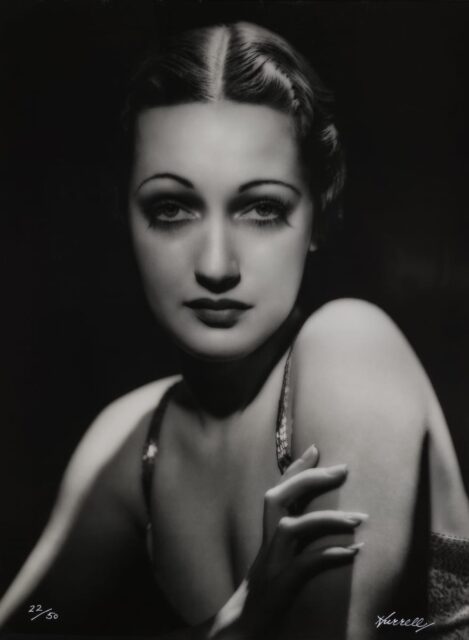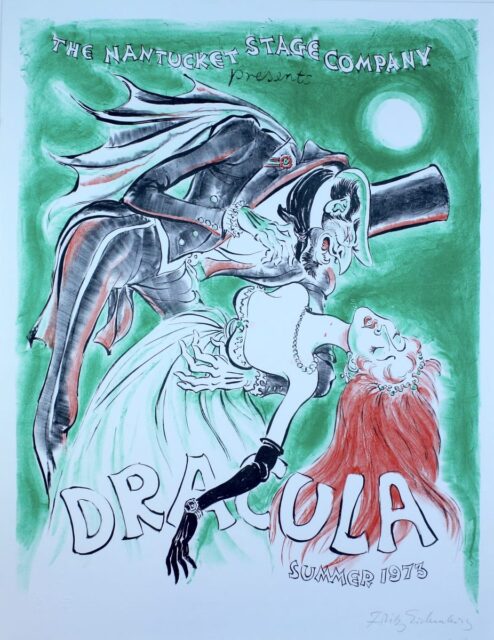A few weeks ago, artist Catherine Opie and curator Charlotte Cotton came to campus for the opening of Opie's new exhibition Catherine Opie: In Dialogue. As part of their time on campus, Opie and Cotton led a fantastic discussion on the works displayed, followed by a reception. The next morning, Opie and Cotton joined students and faculty from a variety of backgrounds for a more intimate lunch and Q&A session. I had the pleasure to sit with Opie at the Q&A and lunch. You can tell, straight from meeting her, that Opie is passionate about her work and also connecting...
Read More
News
Seen on Campus: William Eggleston’s “Untitled (Baby Dolls on Cadillac)”
Written by: Caleb Machorro '28
November 8th, 2024
William Eggleston (American, b. 1939)Untitled (Baby Dolls on Cadillac), 1973Dye transfer print11.75 x 17.75 in.Gift of John Andrew MacMahon '95 As an avid music enthusiast, I first encountered William Eggleston’s work when I discovered the influential cult rock band Big Star. Not only was I drawn to their music, a uniquely disarming brand of power pop, but I was captivated by the visuals that decorated their album covers: from the bold neon-lit star on their bright debut to the candid black-and-white photography complementing the disturbing tone of their third and final album and, most notably, the peculiar photograph that adorns...
Read More
Cultivating Connections: Working with the Catawba Nation
Written by: Izzy Hernandez '25
November 6th, 2024
Thinned Pine stand at the Catawba Nations Wildlife Preserve (Photo by Izzy Hernandez) As I move through my senior year at Davidson, I find myself reflecting on the experiences that have shaped my journey. One of the most cherished has been working alongside Dr. Kevin Smith at the Catawba Nation’s Wildlife Preserve. For two summers, and now as part of my senior Environmental Studies capstone, I’ve been involved in surveying various forest stand types. My work has centered around collecting data on trees, shrubs, and forest floor plants, with a focus on understanding how management practices, particularly loblolly pine thinning,...
Read More
Dorothy Lamour, 1935 George Hurrell (American, b. 1904) Gelatin silver print 48 x 36 in Rarely do I speedwalk the halls of Chambers, inevitably late to a class, and find myself halted in place by what decorates the walls. Dorothy Lamour as posed in print on the first floor of the building immediately captured me. This piece personifies the essence of 1930s silver-screen glamour photography in all its glory, with the subject appearing god-like in her beauty. Dorothy models a low-neck sequin gown, dramatic eye makeup, and dark finger-waved hair, all characteristic of her status and time. Contrasts between the...
Read More
Fritz Eichenberg (German-American, 1901-1990)Dracula, 1973Lithograph on paper26 x 20 in From candy and costumes to pumpkins and witches, Halloween is a frightfully fun day. What better way to celebrate this holiday than with a classic horror story? Fritz Eichenberg’s Dracula is perfect for the spooky season. The piece is an old theater poster advertising for a performance of Dracula. Dracula is a gothic novel by Bram Stoker. Some believe the novel is based on a real-life version of Dracula named Vlad the Impaler, also known as Drăculea. The moment I saw this piece, the sharp contrast between the vivid green...
Read More



